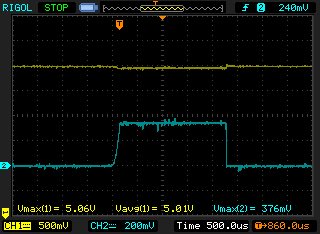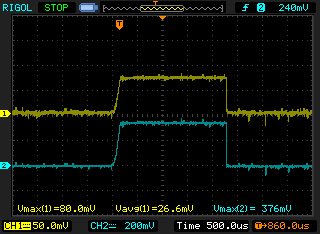Other Parts Discussed in Thread: TPS22963C,
I want to switch a purely resistive load, and thought TPS22919 would be a good choice. The over-current protection is specified to start at around 3A. However, in my circuit I can't get more current than 0.7 A before the TPS22919 starts absorbing the effect, outputting only around 0.12 A.
I control TPS22919 with 3.3 V logics and an external 20 Kohm pulldown to ground
I need 1-1.5 A, from a 3-4 V power source, to heat a hot wire for very short lengths of time. This means I will use a load of 2.5-4 ohm.
Is this within specs for TPS22919?
Could the small load resistance or the small ground potential generated by the return current trigger the over-current protection? Any other potential reasons?
Can you suggest an alternative IC/circuit of similar size, ideally with current limit around 1.5 A instead of shutting off the output?
Thanks in advance





